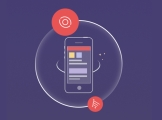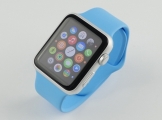|
我正在开发一个可在所有设备(iPad、iPhone)上使用的应用程序。我为 iPad 和 iPhone 平台使用不同的 xib 文件(只是因为原始应用程序仅适用于 iPad 并且效果很好(没有任何自动布局))。
我的 iPhone xib 文件使用自动布局和大小类。我有启动屏幕,我的启动图像设置好了。当应用程序启动时,viewDidLoad 中的 View 框架为 600x600,但没关系,在 viewWillAppear 之前我什么都不做。
此时 xib 文件的框架是正确的(对于 iphone5 和 iphone 6 和 iPhone 6+)。但是我在这个 xib 中几乎没有其他 View 与主视图平行(不是任何其他 View 的 subview )。所有这些其他 View 都有一个 600x600 的框架。
我可以显式设置框架,但我必须手动调整每个 subview 的大小...
如果我关闭尺寸类并仅使用自动布局,则框架始终为 iphone 5s 尺寸。
附:我刚刚添加了所有可能的启动图像(正确尺寸)删除了尺寸类和尺寸如下:
主视图 - 框架 = (0 0; 667 375)
在xib中查看旁边的(不是 subview ,但也必须是全屏 View )-frame = (0 0; 568 320)
所有 View 尺寸都是内部和横向的。
编辑 1
所以我的问题是:
xib 中的其他 View 如何在正确的框架中初始化?不是 600x600。
如果我使用“在 View 层次结构中调试”,我可以看到除主“ View ”之外的所有作为 Root View (而不是任何 subview )的 View 的大小都不合适。即使正确报告了屏幕边界, View 仍然是 600x600 大小。
编辑 2
这个问题提出了类似的问题:
iOS 8 top layout guide auto layout problems
但是没有给出可以普遍解决问题的答案。
Best Answer-推荐答案
如果我将所有其他 View 作为 subview 添加到我的主视图中,框架的大小会正确(感谢自动布局),但这对我来说不是一个选项,因为我不能在启动时将它们全部作为 subview 。
这就是我让它为我工作的方式:
一旦我添加了帧错误的 subview ,我就会像这样向它添加自动布局约束:
[self.view addSubview:_subviewFromSameXib]; //naming just for example
_subviewFromSameXib.translatesAutoresizingMaskIntoConstraints = NO;
[self.view addConstraint:[NSLayoutConstraint constraintWithItem:_subviewFromSameXib
attribute:NSLayoutAttributeTop
relatedBy:NSLayoutRelationEqual
toItem:self.view
attribute:NSLayoutAttributeTop
multiplier:1.0
constant:0.0]];
[self.view addConstraint:[NSLayoutConstraint constraintWithItem:_subviewFromSameXib
attribute:NSLayoutAttributeLeading
relatedBy:NSLayoutRelationEqual
toItem:self.view
attribute:NSLayoutAttributeLeading
multiplier:1.0
constant:0.0]];
[self.view addConstraint:[NSLayoutConstraint constraintWithItem:_subviewFromSameXib
attribute:NSLayoutAttributeBottom
relatedBy:NSLayoutRelationEqual
toItem:self.view
attribute:NSLayoutAttributeBottom
multiplier:1.0
constant:0.0]];
[self.view addConstraint:[NSLayoutConstraint constraintWithItem:_subviewFromSameXib
attribute:NSLayoutAttributeTrailing
relatedBy:NSLayoutRelationEqual
toItem:self.view
attribute:NSLayoutAttributeTrailing
multiplier:1.0
constant:0.0]];
这将执行以下操作:
添加我的 subview 后,它会添加新的约束,告诉该 subview 它必须根据其父 View 调整大小。
这解决了我的问题,但没有解决主要问题:xib 中的多个 View 不会根据屏幕边界调整大小。只有第一个可以。
顺便说一句,我使用的是 xibs 而不是 Storyboard。我应该添加该 Playground 在所有设备上正确显示所有 View 。只有在运行时他们才会搞砸。
关于ios - iphone 6 plus 上具有 600x600 pt 框架的 UIViews 以及大小类,我们在Stack Overflow上找到一个类似的问题:
https://stackoverflow.com/questions/27298142/
|  客服电话
客服电话
 APP下载
APP下载

 官方微信
官方微信

















